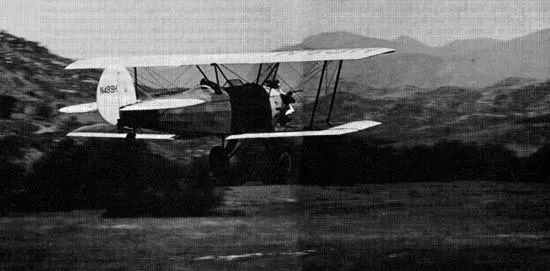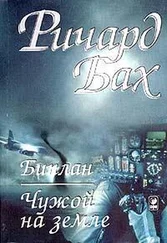Ричард Бах - Biplane
Здесь есть возможность читать онлайн «Ричард Бах - Biplane» весь текст электронной книги совершенно бесплатно (целиком полную версию без сокращений). В некоторых случаях можно слушать аудио, скачать через торрент в формате fb2 и присутствует краткое содержание. Город: New York, Год выпуска: 2012, ISBN: 2012, Издательство: Scribner, Жанр: Современная проза, на английском языке. Описание произведения, (предисловие) а так же отзывы посетителей доступны на портале библиотеки ЛибКат.
- Название:Biplane
- Автор:
- Издательство:Scribner
- Жанр:
- Год:2012
- Город:New York
- ISBN:978-1-4516-9744-5
- Рейтинг книги:3 / 5. Голосов: 1
-
Избранное:Добавить в избранное
- Отзывы:
-
Ваша оценка:
- 60
- 1
- 2
- 3
- 4
- 5
Biplane: краткое содержание, описание и аннотация
Предлагаем к чтению аннотацию, описание, краткое содержание или предисловие (зависит от того, что написал сам автор книги «Biplane»). Если вы не нашли необходимую информацию о книге — напишите в комментариях, мы постараемся отыскать её.
Biplane — читать онлайн бесплатно полную книгу (весь текст) целиком
Ниже представлен текст книги, разбитый по страницам. Система сохранения места последней прочитанной страницы, позволяет с удобством читать онлайн бесплатно книгу «Biplane», без необходимости каждый раз заново искать на чём Вы остановились. Поставьте закладку, и сможете в любой момент перейти на страницу, на которой закончили чтение.
Интервал:
Закладка:
I have a friend who is a race-car driver and he says racing is the greatest fun in the world. For him; he keeps forgetting to say, for him. For anyone else—well, for me—it is a frightening sort of fun. As in so many pursuits that are pinned to the ground, there is no margin, no time for thinking of other things. He must stay precisely upon that narrow ribbon of asphalt, and if anything looms ahead or even if the ribbon is not properly banked, the driver is in trouble. He has to think hard about driving every second that he holds that accelerator down. The sky, on the other hand, and very happily, is for dreamers, because there is so much margin, so much freedom. In an old airplane the takeoff and the landing are a bit critical, but the flying itself is the simplest, most controllable way to travel since. since nothing at all. Something in the way ahead? Climb over it. Turn around it. Fly underneath it. Circle for a while and think about it. None of these can the race driver do. He can only try to stop. With his margin, the airplane pilot can sit back in his cockpit and relax. He can spend long minutes looking behind his airplane, or above it or below it. Looking ahead is a sort of formality that has carried over from habits learned on the ground. He can do anything he wants to do with the ground; tilt it, twist it, put it over his head or directly behind his tail. And he can let it just wander its sleepy way below and look down at it through slitted eyes and make it go all misty and unreal.
The signs and the warnings and the agencies of flight remind solemnly that one should never let his attention shift from the urgent task of flying his airplane, that to let the mind drift for a second is disaster. But, after one has been flying for a very short while, it becomes clear that the agencies take themselves far too seriously. As a student pilot learns early in his first lesson, an airplane will fly itself better than he can fly it. An airplane does not demand the constant concentrated thought to stay in the air that the race car demands to stay on its narrow road. Following only the basic caution of not flying into a tree or the side of a mountain, a pilot finds the sky a perfect place to go and not-think.
Now, driving a foot above Highway 80 in my airplane, I must be a little more cautious than in those hours when there are five hundred or a thousand feet between my wheels and the earth. Now I can be the race driver, but without the penalty that plagues him. If I miss the turn, I can go right on over the guard rail, on over the rocks and boulders and the trees, and not feel the slightest tremor in my machine.
Over the rise of a hill ahead, unexpectedly, a car driving toward me. Back hard on the stick, and a turn into the sun, to gain that five hundred feet. I can’t help but smile within myself. What would that feel like for me, to be driving over a little rise of ground along an ordinary road way out in nowhere and suddenly be confronted with an airplane headed directly at my windshield? That’s not a very kind thing for an airplane pilot to do to people, despite the legality of it, and I should peek over the hills before I allow the biplane to frighten some poor driver who would rather be alone with his even-chuffing train of thought.

So we go our way, peeking over the hills first, then pressing ourselves tightly to the road, rolling our wheels once or twice on either side of the white line without really meaning to.
A bit of a start as I glance at my watch, for I have been flying for over four hours and am far ahead of my estimate for this hour. Ahead, the town of Ranger, Texas, listed on the map as home to an airport, I climb to see better, and find the water tower, the crossing of another highway, a building being built. And an airport. It is a big airport for such a small town, three dirt runways crossed on the ground and a pair of hangars. Circle once, check the windsock and, with a silent word of thanks to the man who decided to have more than one runway available for landing, turn into the wind and settle to the dirt.
It is not even lunchtime and I have covered five hundred miles from Louisiana. That seems like so much, and I am proud, but away in the future/past I have flown airplanes that covered that distance in less than an hour, and one that could cover it in twenty minutes. There should be something meaningful in the contrast, in the shifting spectrums of times and airplanes, but now I am tired from four hours of sitting on a stone-hard parachute, and at the moment the meanings come second to the luxury of standing up and taking a step along an unmoving ground. The flight is going like a welcome routine, everything according to plan and as I would have it. And at the moment, at Ranger, Texas, as I wipe the oil from the windscreens and from the cowl, I do not think of the plan or of the future.

10

“SORRY, MISTER. I can’t swing that prop for you. Can’t turn the crank, either. Insurance. My insurance wouldn’t cover me if I got hurt.”
Strange strange strange, and I’m furious as I storm from the cockpit where I have been ready for engine start. Come all this way having too many willing helpers to tend the biplane and now, in a hurry to be gone, I have to get out here in the ninety-degree sun in a fur-lined jacket and I have to crank the airplane by myself, while the attendant stands back and watches. Anger converts easily into energy, and by the time the inertia flywheel is screaming I am too tired to bother with the fears of the attendant. Pull the starter engage handle, let the engine roar into life and shake a blanket of dry dust behind, taxi to face the wind, run the engine and let go the brakes. A glance at my watch as the wheels lift from the ground and I begin to tick away another four hours, second by second. I settle down upon my friend the highway and it is as if I had not landed at all, as if I have been sitting constantly behind this propeller from sunrise, and from the night before that and from the day that led into the night. It will be good to get to California and home.
The crosswind has turned now to become a strong breeze, pushing me hard to the right, so that I must fly angled to the highway, fighting the wind with the bright blade of my propeller.
Fighting the wind with the blade. That is sort of poetic. But, when one is pressed shoulder to shoulder with the roiling forces that travel the sky, one needs every weapon he can get. A propeller is one of the pilot’s weapons, for as long as it turns he is not really thrown on his own. As long as it turns it is not just a man against the crosswind or the headwinds or the ice over sea, but a man and his airplane, working and fighting together. One doesn’t feel quite so lonely. Still, the propeller is not a friend without weakness, and to know the weakness and to supply the need of the weapon in those times is a wise practice. A propeller can be bravely turning full revolutions, as fast as it can turn, and if the airplane flies into a mass of air that is falling faster than the airplane can climb, it is all to no avail and the weapon and the pilot slide toward the earth. But the simple forethought of seeing the weakness and supplying it, of knowing that one can escape downdraft, and turn a mile away to a place where the air is rising, fills the coffers with altitude. So, before the weapon is even unsheathed for battle, before it is needed or the battle has been joined, the man in the airplane can supply the needs of his weapon. Enter this valley on the right side or the left? On one side will be a constant fight, a furious running duel with the wind and the mountain. On the other side, perhaps less than a mile distant, a smooth flight, that needs even less power than normal to maintain altitude. So, as he learns, the pilot begins to think not of left side or right, but upwind side or downwind. At first the student pilot would seek to disregard the wind, to cast it from his thought, for he has too many problems already to concern him, and give him one good reason why he should bother with something he can’t even see. The answer, the student learns, is simply to be able to see the wind. The wind is a giant ocean of air surging along the rocky floor of the earth. Where ocean waves would tumble green and rushing down the side of the mountain, look for the wind to do the same. Where ocean would smash against the base of a cliff and shoot straight up, see there, on a day when the wind is strong, a power that will take an airplane by the wings and throw it headlong into the sky. Fly always the upwind side of the mountains and hills and you can fly easily, in the conscious power of one who knows that he needn’t even loose his weapon to win a battle or to avoid it.
Читать дальшеИнтервал:
Закладка:
Похожие книги на «Biplane»
Представляем Вашему вниманию похожие книги на «Biplane» списком для выбора. Мы отобрали схожую по названию и смыслу литературу в надежде предоставить читателям больше вариантов отыскать новые, интересные, ещё непрочитанные произведения.
Обсуждение, отзывы о книге «Biplane» и просто собственные мнения читателей. Оставьте ваши комментарии, напишите, что Вы думаете о произведении, его смысле или главных героях. Укажите что конкретно понравилось, а что нет, и почему Вы так считаете.





